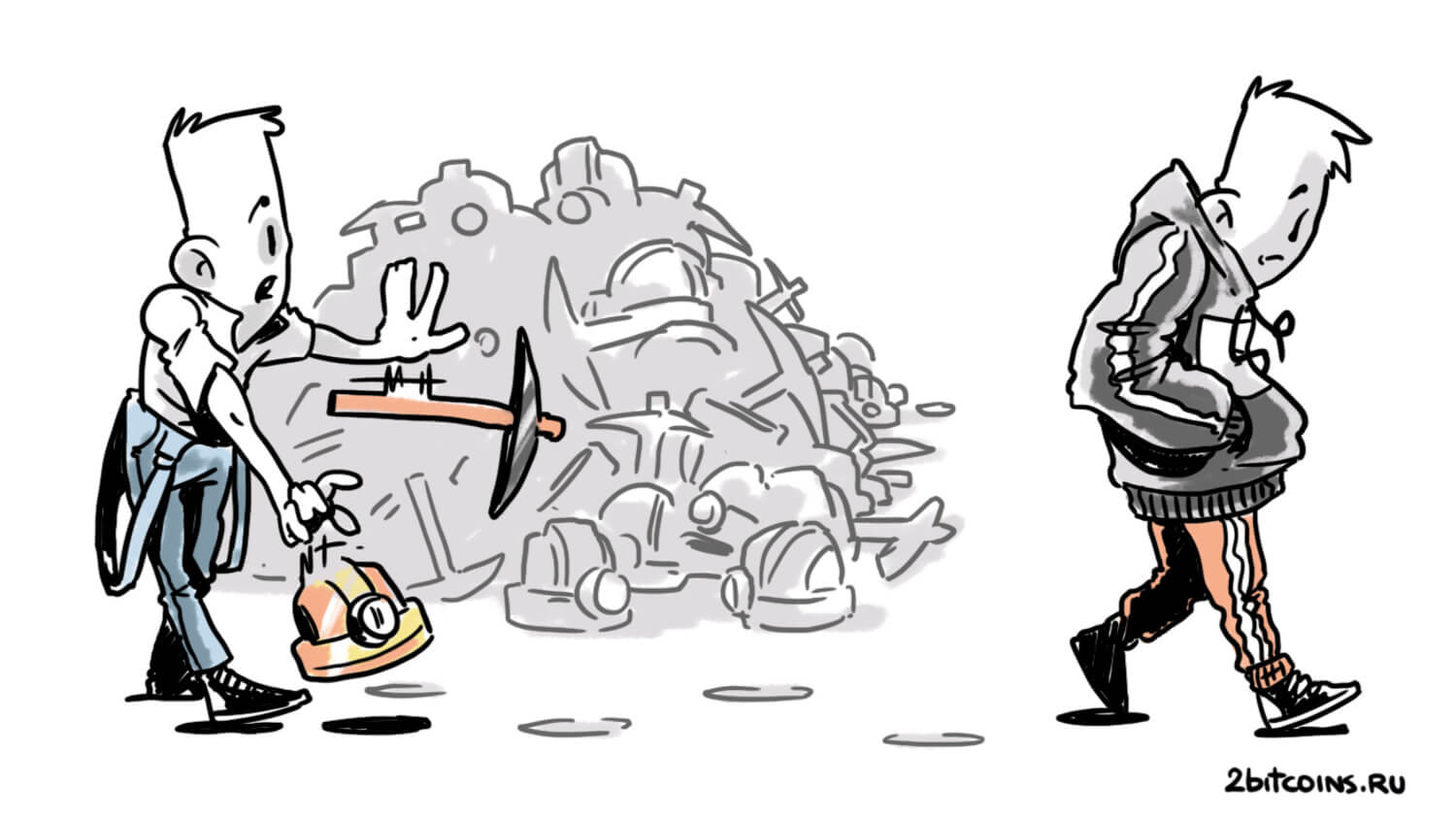The collapse of Bitcoin miners was markedly different from previous phases of the cryptocurrency market crash. What does this mean?
During a rising crypto market, miners tend to hoard bitcoins – thus reducing the supply of coins available for purchase and serving as an additional factor in the continuation of the bull run. Moreover, during bull cycles, miners do not need to constantly sell BTC to make a profit – as a rule, a bull trend “takes away” the value of bitcoins in miners’ stock well above the cost of their production.

When the situation is exactly the opposite - that is, Bitcoin falls regularly - miners have to regularly sell BTC to cover their energy and equipment maintenance costs. This is called capitulation - it was relevant for miners during the market crash in 2022.
Capitulation is usually accompanied by a significant number of miners going out of business, but in this bear cycle the situation has changed somewhat. The field of mining is now subject to different rules.
What is happening to Bitcoin mining?
In June 2022, analytics platform Arcane Research published another report. It revealed that in May, large mining companies like Marathon Digital and Riot Blockchain were selling more bitcoins than they were mining, meaning that their reserves were steadily shrinking. At the beginning of last year, these same companies were only selling a third of their mined coins, which also allowed them to build up an asset reserve.
Volume of coins sold by mining companies
In an interview with Decrypt journalists, Christopher Bendixen, head of research at CoinShares, noted that there are now completely different trends in the first cryptocurrency mining market. Here’s a relevant rejoinder from the expert.
In a much less efficient capital market, it must have been less “orderly”, which manifested itself in the form of large pullbacks on Bitcoin’s mining difficulty graph. This time is different, although we have seen many companies go bankrupt, as well as whole market areas in crisis.
Miners who cannot adjust to lower returns during capitulation cycles tend to go out of business. Their equipment is unplugged, after which the complexity of mining drops significantly, which is what Bendixen emphasised. During these periods of time, mining becomes more profitable for those who stay, though only until the next difficulty recalculation, which occurs approximately every fortnight.
Bitcoin mining hash rate and complexity
By the end of 2022, however, there were no serious slumps in BTC mining complexity, not even after the bankruptcy of cryptocurrency exchange FTX. Over the same period, Bitcoin’s hash rate reached a new all-time high several times, meaning that there were virtually no major players leaving the mining sphere.
According to Bendixen, even the bankruptcies of cryptoprojects last year did not have a significant impact on the difficulty of mining, because this time most of the miners in the network were based in the US. Before China’s 2021 mining ban, it was China that hosted most of the network’s hash rate. And a total ban on mining had a much bigger impact on the figure.
Now that most of the miners are in the US, the business has moved into the hands of local big companies. Here they have a much better financial opportunity to survive a serious crisis in the digital asset market. Some mining companies can continue mining BTC even after they go bankrupt, such as Core Scientific, which filed for bankruptcy back in December 2022.
In February 2023, the giant agreed to the terms of a $38.6 million debt payment to New York Digital Investment Group (NYDIG). As it became known through the published data, more than 27 thousand ASIC miners, which previously worked for Core, will be used as collateral for the repayment of funds. At the time, the representatives of the latter stated that "the long-term benefits of the debt repayment outweigh the possible negative impact on the financial condition of the firm in the short term". The relevant decision was then to be approved by a court.
Bitcoin exchange rate
The Bitcoin price is still 66 percent below its all-time high set in November 2021. According to Bendixen, the situation is unlikely to improve dramatically before the end of this year. Which means investors will most likely have to wait for the next Bitcoin halving, which will be the starting point for a new global bullrun. At least in the past, the reduction in the reward for a mined block of BTC has coincided with the timing of the next growth phase of the digital asset market.
We believe that such changes in the cryptocurrency market are extremely curious because they take into account developments around the world. In this case, many miners found themselves in the US after China banned such activities in the spring of 2021. And because the owners of computing equipment have the resources, they continue to operate and accumulate digital assets. In fact, that is why we are seeing ever-increasing hash rates along with the complexity of BTC mining at the current stage of market decline. This hasn't happened before in bear markets - and it's a tangible difference to the current state of the cryptocurrency industry.
In the meantime, you have plenty of time to take a closer look at the crypto market. Subscribe to our Millionaire Cryptochat, you’ll find more interesting things about crypto there. And at the same time people to discuss what’s going on in the industry.















